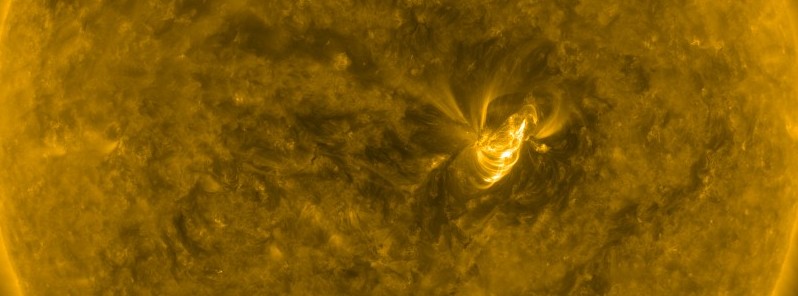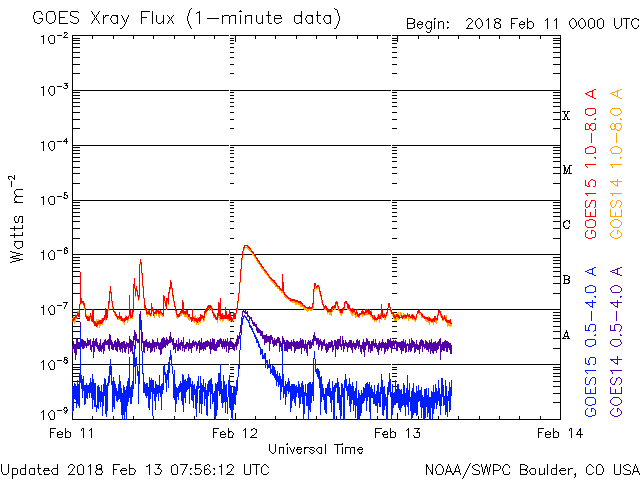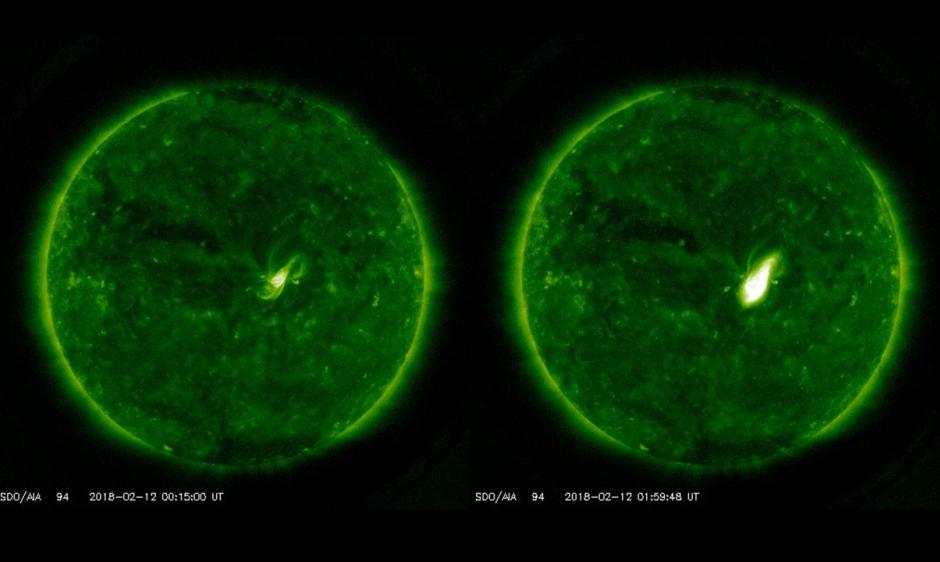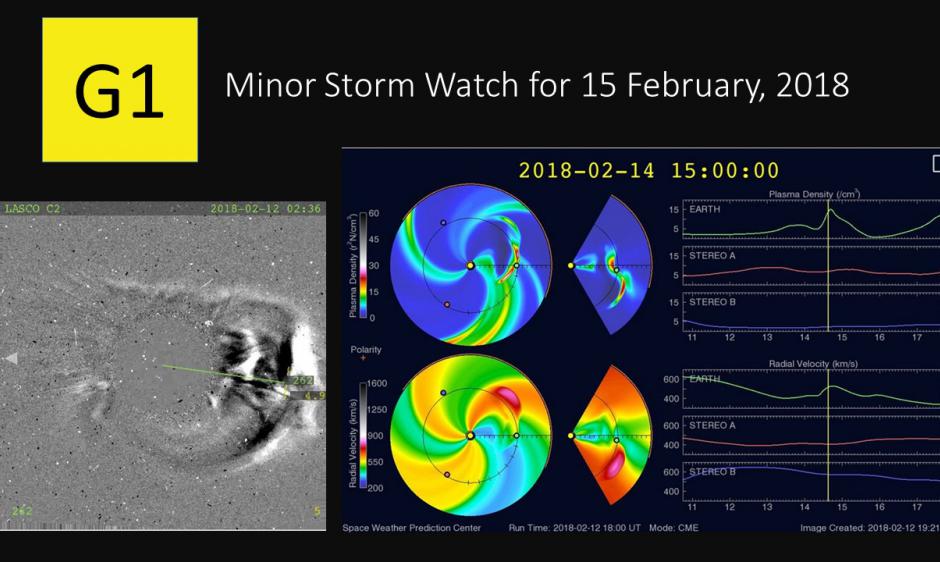Long-duration C1.5 solar flare produced Earth-directed CME

A long-duration C1.5 solar flare erupted from geoeffective Active Region 2699 on February 12, 2018. The event started at 00:15, peaked at 01:35 and ended at 03:21 UTC. A G1 – Minor geomagnetic storm watch is in effect for February 15.
This event produced an asymmetric halo Coronal Mass Ejection (CME), first observed in SOHO/LASCO C2 imagery at 01:25 UTC.
WSA/ENLIL model analysis of this event indicates a glancing blow late February 14 to early February 15. Current background solar wind speeds are slower than routine model predictions, so the forecast arrival timing of the CME has been slowed from the WSA-Enlil CME model run prediction.
A G1 – Minor geomagnetic storm watch is now in effect for February 15, 2018, in response associated with the arrival of this CME.



There is a chance for C-class flares with a slight chance for an isolated M-class flare (15%) over the next three days due to the flare potential of Region 2699.

Sunspots on February 13, 2018. Credit: ESA PROBA2/SWAP
A glancing blow from the February 12th CME combined with Co-Rotating Interaction Region (CIR) effects in advance of a negative polarity CH HSS is expected to arrive late February 14 through early February 15. Active levels are expected late on February 14 with unsettled to G1 – Minor storm levels likely on February 15.
Featured image credit: C1.5 solar flare on February 12, 2018. Credit: NASA SDO/AIA

Someone said we need to turn of our electric/electronic devices? True?
Not with such small flares. It’s long duration, but still.. this is expected to be G1 minor